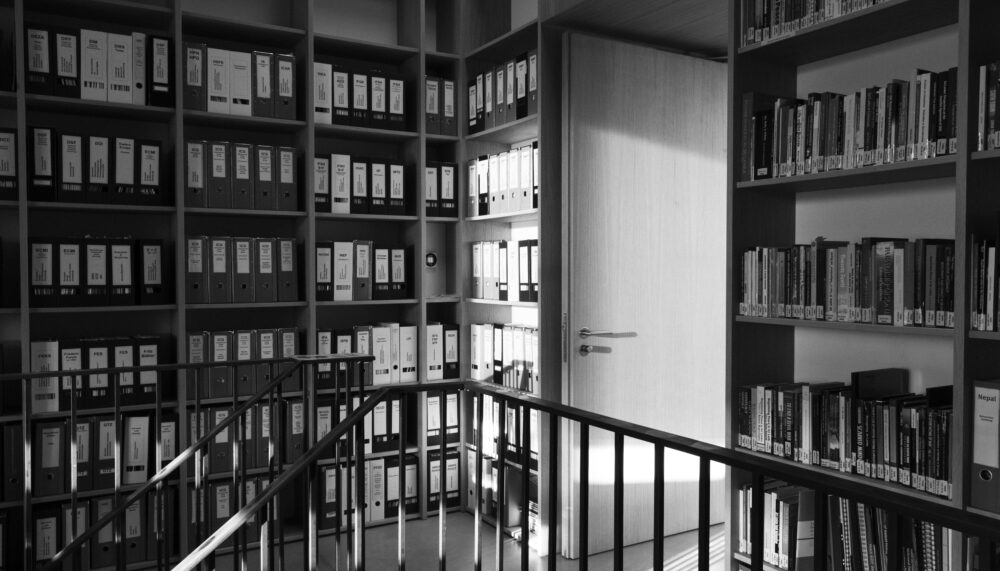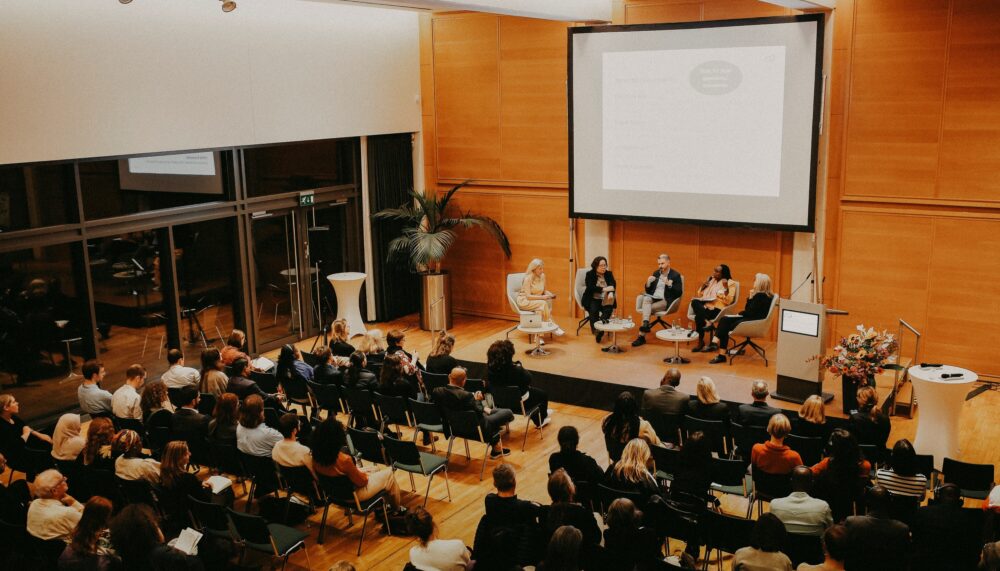BLOG POST | 30 Aug 2023
The heart of the matter
Human rights in mediation

A call on mediation and human rights experts to work together for holistic approaches to peace.
By Katarina Månsson
Why did you decide to write this book?
Fundamentally, I wanted to understand and illustrate the important role that human rights can play in what is arguably the most challenging political process – i.e. mediation between two or more parties to conflict.
We often speak about the inherent problem-solving character of human rights, but are less successful in showing how this unravels concretely in real life. By illustrating how human rights have contributed to and facilitated mediation processes, this book attempts to highlight their positive problem-solving power – or “political potential” of human rights.
Now more than ever, we need to demonstrate that human rights can facilitate political dialogue and multilateral efforts to find common ground and agreement in governance for peaceful co-existence.
Today’s dire reality of a breakdown in trust, the rule of law and multilateralism, and disregard of fundamental principles of the United Nations Charter – including in regard to peaceful settlement of disputes, also motivated me to pursue this project. Now more than ever, we need to demonstrate that human rights can facilitate political dialogue and multilateral efforts to find common ground and agreement in governance for peaceful co-existence.
Against this backdrop, the book seeks to broaden not only the understanding of human rights among mediation experts, but to increase the practical use of human rights in the field of mediation. I hope it will contribute to ongoing efforts that seek to encourage greater cooperation between human rights professionals and experts in the mediation field. In this regard, the research served as a direct contribution to an ongoing joint project between the Department of Political and Peacebuilding Affairs (DPPA) and the Office of the United Nations High Commissioner for Human Rights (OHCHR) on human rights in mediation and the development of a joint Practice Note on the topic.

What’s the key thesis of your book?
As the title alludes to, a key thesis is that human rights are a necessary albeit difficult aspect that truly stands at the heart of mediation. Since conflicts most often stem from unfulfilled or violated human rights, the resolution of conflict must also address those dimensions. Past and present practice proves that mediators themselves have embraced human rights, despite the difficulties and sensitivities, even going as far back as the peace efforts by the first-ever UN mediator – Count Bernadotte in Palestine in 1948. In what became his last so-called progress report to the General Assembly in September 1948, Bernadotte’s call for equal political, economic, social and religious rights of all Arabs and Jews was part and parcel of his proposals for a peaceful settlement of the Palestinian conflict. Bernadotte may have been inspired by an overwhelming agreement among the drafters of the United Nations Charter at the time, namely that peace – both within and between states – depends on the fulfilment of individual rights and freedoms.
The book is therefore a call to urgently recommit to that consensus and understanding in 1945 by approaching human rights holistically: i.e. the full spectrum of human rights need to be engaged in mediation processes – economic, social, cultural, civil and political. This requires mediators to look not only to the past (justice for victims) but equally to the future (institutional protection of rights). This is essential in that it goes beyond an oft-held perception that human rights are primarily about criminal accountability of perpetrators to embrace a broader understanding of human rights as an essential component of political governance and inclusive statehood. Such an approach also lends a unique credibility and legitimacy to the mediator as an impartial actor given the universality of human rights norms and standards. It is opportune to remind that a holistic approach to human rights is also one of the building blocks in the Secretary-General’s vision for multilateralism as presented in his recently published New Agenda for Peace. This approach builds on the Secretary-General’s Call to Action for Human Rights which emphasizes the shared responsibility to advance a culture of respect for the full spectrum of human rights.
Mediators need to look not only at the past but equally to the future.
How to pursue this in the challenging political realities of mediation today is the difficult question, and the book identifies seven tentative answers to this question based on case studies and interviews.
How did you go about researching and writing?
The book is based on research conducted at the Berghof Foundation in Berlin from November 2021 through February 2022 within the United Nations Sabbatical Leave Programme. The Berghof Foundation provided an excellent institutional home for the research due to its expertise and vast network in the field of peace dialogue, conflict studies and third-party mediation. It also allowed me to gain valuable insights into how non-official mediation institutions approach and consider human rights in their work.
A unique aspect of the book is the close to 60 interviews with senior officials and other representatives of the UN and non-official mediation institutions, including Berghof, with direct present and/or past experience in mediation and human rights. I was particularly curious and eager to find out how mediators themselves conceive and avail of human rights norms, analysis and mechanisms in their work.
This is essential: If we want to see greater uptake of human rights in peacemaking efforts, we need to discern how mediators approach and understand human rights. During interviews, I sought – and received – honest assessments from mediators and conflict resolution experts with hitherto untold examples of how they were guided by, or used, human rights while mediating between parties to conflict.
I remain deeply grateful to all interviewees and hope that their accounts will inspire contemporary mediation efforts and encourage mediators to set aside misgivings or fears about human rights dimensions of conflict resolution.
Who is the main target audience?
As indicated above, the book seeks to instil interest and curiosity – and hopefully demand – for human rights among mediators and others engaged in peacemaking and conflict resolution. As a constituency, mediators have largely remained outside the traditional reach and realm of human rights work. I sincerely hope that the book can contribute to a rapprochement between mediators and human rights professionals – a dialogue and cooperation that I argue is vital if peacemaking and peacebuilding efforts are to be sustainable, effective and impactful.
It is therefore also directed to human rights experts and practitioners – each professional group need to learn from each other and better understand the techniques, constraints as well as opportunities, and language of the other. It’s about “joining the dots”, as one interviewee said, as each side has much more in common with the other than the opposite. I also hope that policymakers in international and regional organisations will find this a helpful reference to inspire institutional and operational guidance on the role of human rights, and international law more broadly, in mediation.
Can you give any examples of this approach?
I think the issue is more about how human rights and mediation expert communities can work more closely together through joint analysis and strategising. This will allow for a more comprehensive understanding and diagnosis of a conflict setting and, consequently, including by interpreting and translating international norms and standards, enable the identification of concrete political solutions or acceptable compromise.
The peace process in Colombia 2012-2016 is an extremely important example in this regard and that can serve to inspire future mediation processes. Notably, the parties themselves – i.e. the Government of Colombia and the FARC – placed the rights of victims at the centre of peace talks at the very outset and ensured victims’ direct participation to inform the negotiations (a first in any mediation process). The Colombian peace process also benefitted from human rights analysis and information from a long-standing OHCHR country presence, including in the most conflict-affected rural areas, and very active domestic human rights and other civil society organisations who that played an important role in the popular consultations that further contributed to the peace talks. In addition, the Prosecutor of the International Criminal Court and other actors played a constructive role in supporting the development of Colombia’s own unique transitional justice model – the Special Jurisdiction for Peace – based on victims’ rights and interests and recognition of their suffering. These and other aspects make Colombia an important model for mediation based on, informed by and oriented towards human rights.
I also found the concrete role played by individual mediators in using and bringing in human rights considerations in peace processes fascinating and helpful. This is exemplified by the role of Álvaro de Soto in El Salvador (1990-92) or Martti Ahtisaari in Aceh (2005) as well as the role of successive High Commissioners on National Minorities of the OSCE, starting with Max van der Stoel. The book is about sharing their and many other mediators’ experiences and reflections on what worked and what could have been made different so that future processes can learn from the past.
Any final thoughts?
I was very encouraged by the positive reception of this project among all interviewees and the overwhelming agreement on the need to step up action to make human rights an integral and more institutionalised part of mediation – regardless of the actor. There seems to be a common agreement that being principled and pragmatic at the same time is possible and that adjustments and flexibility on each side are needed. So, going forward, I am hopeful that we will see new and exciting developments in this field.
Media contact
You can reach the press team at:
+49 (0) 177 7052758
email hidden; JavaScript is required


